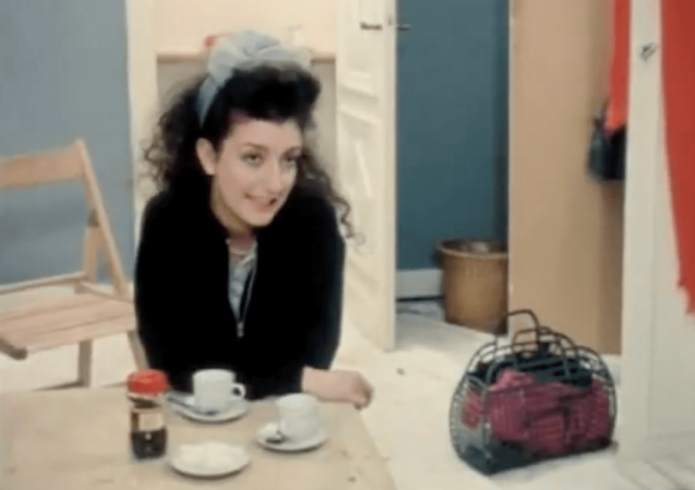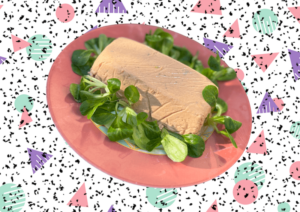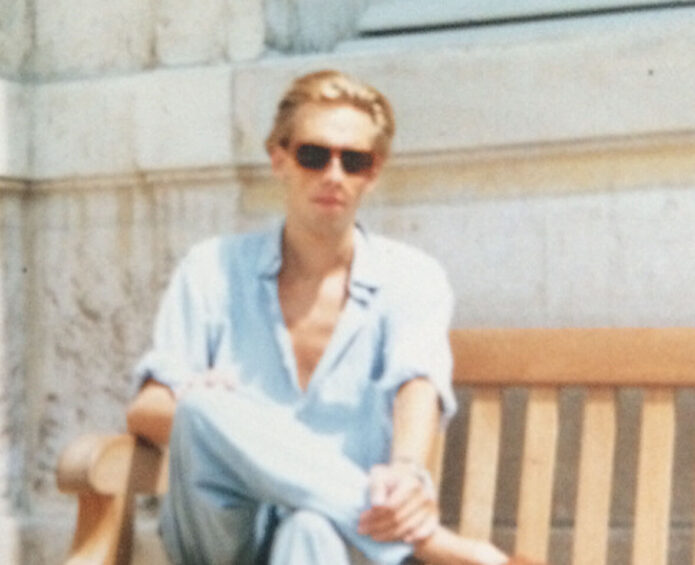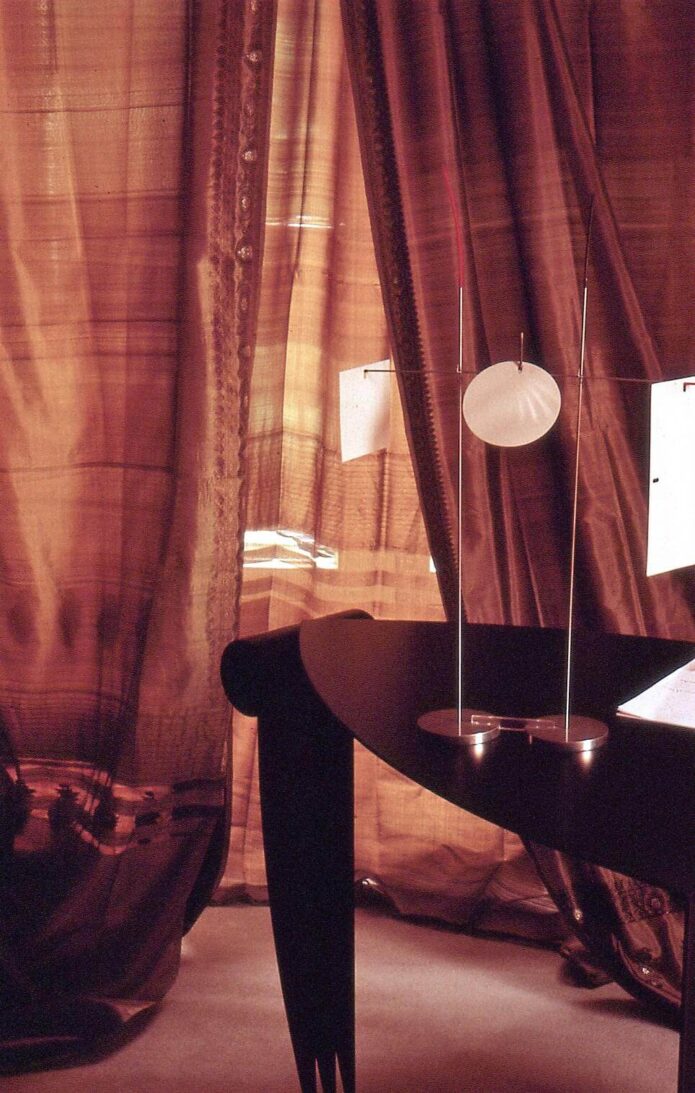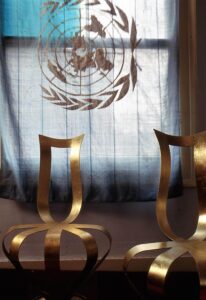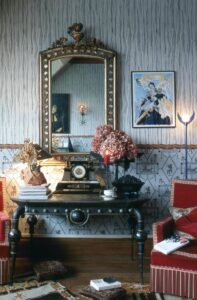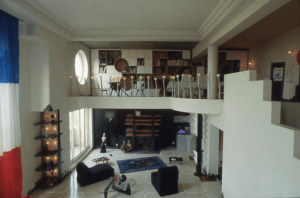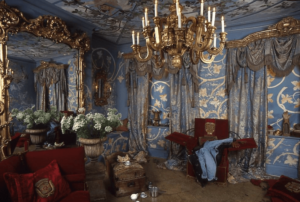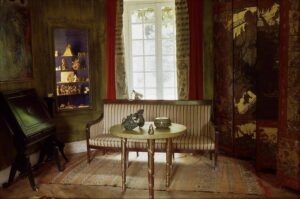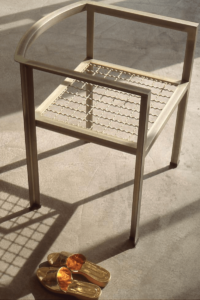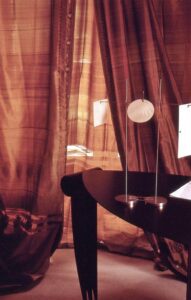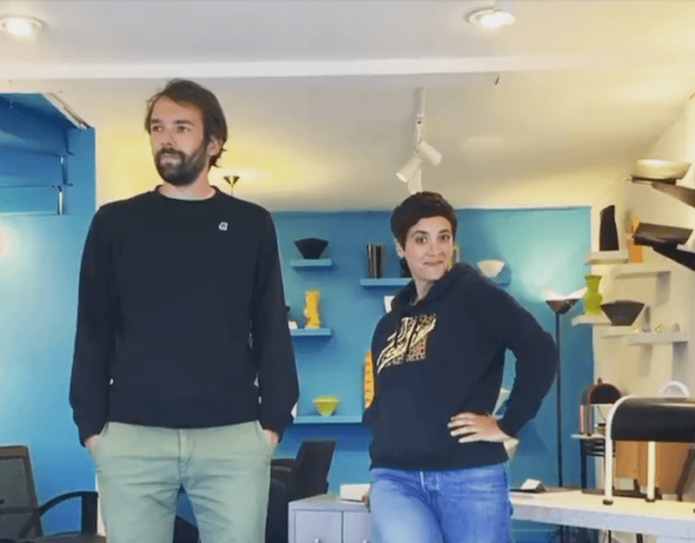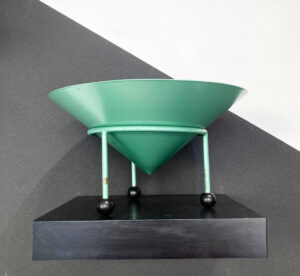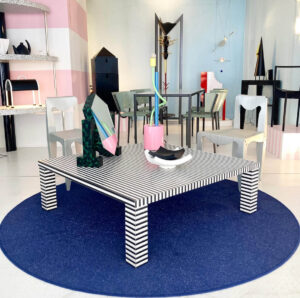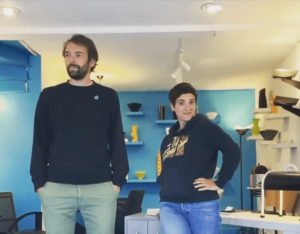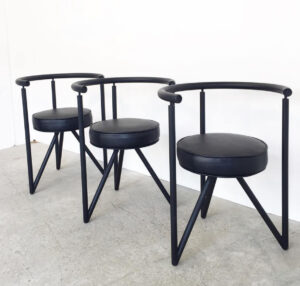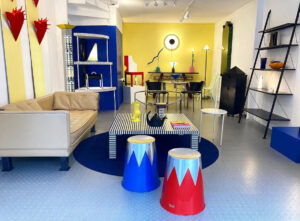Als er een Franse film is die de tijdgeest van de jaren 80 perfect vangt, dan is het wel Les nuits de la pleine lune (1984) van Eric Rohmer. Het is een visueel tijdsdocument van een decennium: van de synthpop door Elli et Jacno tot de plastic boodschappentassen in felle kleuren en de interieurs in grijstinten.
Go to the English version of this article.
Het deuntje van de titelsong ‘Les nuits de la pleine lune’ klinkt anno 2025 misschien wat tam, maar het geluid van Elli et Jacno is heel erg jaren 80. En kijk naar de hoofdrolspeelster Louise, gespeeld door Pascale Ogier. Ook zij ademt met haar kapsel en kleding de tijdgeest.
Dat geldt ook voor haar oude appartement in Parijs dat ze aanhoudt omdat ze in tegenstelling tot haar vriend Rémi niet kan aarden in het nieuwbouwappartement in Marne-la-Vallée ten oosten van Parijs. Ze wil graag uitgaan. Ze sluit een deal met Rémi dat ze weliswaar bij elkaar blijven maar dat ze allebei uit mogen gaan. En wellicht verliefd worden.
Dit loopt helaas verkeerd af voor Louise, die ondertussen haar liefdesleven bespreekt met Octave (een heel jonge Fabrice Luchini). Rémi wordt verliefd op iemand anders en wil met haar verder.
Voor Les nuits de la pleine lune liet Eric Rohmer zich meer inspireren door de tijdgeest van de jaren 80 dan in zijn andere films. Hij wilde het nachtleven, de feeststemming en de wereld van de ‘hippe types’ verkennen, lezen we op Wikipedia. Daarmee oogstte Rohmer veel lof, want een hele generatie kon zich herkennen in de film. De film werd ‘met zijn feestelijke uitbundigheid, relationele chaos en verlangen naar vertrouwde tradities een model van de Parijse cultuur van de jaren 80’. Anders gezegd: de recensies waren bijna unaniem positief.
Ook hoofdpersoon Ogier schitterde. Niet alleen met de interieurs en kleding die ze voor de film had verzorgd, ook werd ze in de ogen van het publiek een soort archetype van de Parijse vrouw van 1984. Spijtig genoeg heeft ze maar een paar weken van die roem kunnen genieten. De avond voor haar 26e verjaardag in oktober 1984 overleed ze aan een hartaanval. Maar in de film zal ze voor altijd blijven voortleven.
© Tekst: Monsieur Plusfours 2025; beeld: screenshot Les nuits de la pleine lune
MELD JE AAN VOOR ONZE GRATIS NIEUWSBRIEF
Door je in te schrijven ga je akkoord met ons privacybeleid en ontvang je automatisch onze nieuwsbrief, net zolang totdat je je weer afmeldt.
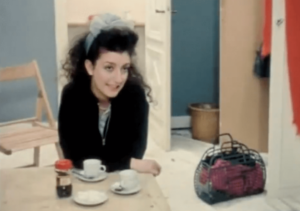
Film Les Nuits de la pleine lune: A Time Capsule of the 1980s
If there is one French film that perfectly captures the spirit of the 1980s, it is Les Nuits de la pleine lune (1984) by Éric Rohmer. It serves as a visual time capsule of the decade: from the synth-pop sounds of Elli et Jacno to the brightly colored plastic shopping bags and interiors in shades of gray.
The melody of the title song Les Nuits de la pleine lune may sound somewhat tame in 2025, but Elli et Jacno’s sound is unmistakably 1980s. And then there’s the lead actress, Louise, played by Pascale Ogier. Her hairstyle and clothing embody the era just as much. The same goes for her old Paris apartment, which she keeps because, unlike her boyfriend Rémi, she struggles to settle into their new-build apartment in Marne-la-Vallée, east of Paris. She wants to go out. She makes a deal with Rémi: they will stay together, but both are free to go out—and perhaps even fall in love. Unfortunately, things don’t go as planned for Louise, who confides in Octave (a very young Fabrice Luchini) about her love life. Rémi falls in love with someone else and decides to move on with her.
For Les Nuits de la pleine lune, Éric Rohmer was more influenced by the 1980s zeitgeist than in his other films. He wanted to explore nightlife, the party scene, and the world of “hip” people, as noted in Wikipedia. His approach was widely praised, as an entire generation saw itself reflected in the film. It became, with its festive exuberance, relational chaos, and longing for familiar traditions, a model of 1980s Parisian culture. In other words, reviews were almost unanimously positive.
Lead actress Ogier also shone—not just on screen but also behind the scenes, as she curated the interiors and costumes for the film. In the eyes of the public, she became an archetype of the Parisian woman of 1984. Tragically, she only had a few weeks to enjoy her newfound fame. On the eve of her 26th birthday in October 1984, she died of a heart attack. But in the film, she will live on forever.
SIGN UP FOR OUR FREE DUTCH-ENGLISH NEWSLETTER!
You will automatically receive our newsletter until you unsubscribe.
